Results 5,651 to 5,660 of 12096
Thread: Anandtech News
-
01-14-16, 11:36 AM #5651
Anandtech: Intel: For Mainstream Gamers, Our IGPs Are Equivalent to Discrete GPUs
Intel’s integrated graphics processors (IGPs) are the most widespread PC-class graphics adapters on the planet. Enthusiasts of high-performance personal computers do not use Intel’s IGPs, but the world’s largest developer of microprocessors says that for mainstream and casual gamers its graphics solutions offer performance, which is comparable to that of inexpensive discrete graphics cards.
“For the mainstream and casual gamer, we have improved our Iris and Iris Pro graphics tremendously,” said Gregory Bryant, vice president and general manager of the desktop client platforms at Intel, at the J.P. Morgan Tech Forum at the 2016 International CES. “We have improved our graphics performance [by 30 times] from where it was five years ago. We believe that the performance of Intel’s integrated graphics today, what we offer in the products […], is equivalent to the performance of about 80% of discrete [GPU] installed base.”
Intel has been improving its integrated graphics cores rather rapidly after the company cancelled its discrete graphics processing unit code-named Larrabee in 2010. Thanks to timely transition to newer process technologies, Intel could increase transistor budget of its central processing units significantly every couple of years. As the company did not increase general-purpose core count of its mainstream CPUs for desktop and mobile computers in the recent years, the lion’s share of that additional transistor budget was spent on IGP-related improvements.
Intel considers its code-named Clarkdale and Arrandale processors as its first-generation CPUs with integrated Intel HD Graphics core (which is not entirely correct since these CPUs had two dies: the processor die as well as graphics and integrated memory controller die). Back then, Intel’s most advanced IGP featured 12 execution units (EU) with peak compute performance of around 43 GFLOPS. Since then, the architecture of Intel’s integrated graphics processors has evolved to accommodate new features and gain performance. Today, each EU features two ALUs that can execute up to four 32-bit floating point or integer operations per cycle (in fact, one of the two ALUs within Intel’s Gen8 EU also supports double precision 64-bit floating point operations). Intel’s latest microprocessors — Broadwell with GT3e and Skylake with GT4e graphics cores — have Iris Pro IGPs with 48 and 72 EUs as well as peak compute performance of 883 and 1152 GFLOPS, respectively.
While Intel did not define what it considers to be installed base of discrete graphics cards, it is obvious that the company compares its recent Iris and Iris Pro integrated graphics processors to discrete graphics adapters sold in the last five or even more years and which are currently in use. Such comparison generally makes sense since the Iris Pro 6200 (the most powerful IGP of Intel’s Broadwell processor with 48 execution units) offers performance, which is higher than that of AMD Radeon R7 240 graphics card (Oland GPU, 320 stream processors, 20 texture units, 8 raster operations pipelines, 128-bit memory controller), based on our findings published in June, 2015.
Intel’s latest integrated graphics processor found in Skylake chips — the Iris Pro 580 with 72 execution units and 1152 GFLOPS compute performance — should outperform even more advanced discrete graphics processors. In fact, AMD's latest integrated graphics core also outperforms the low-end graphics card (albeit, by a small margin).
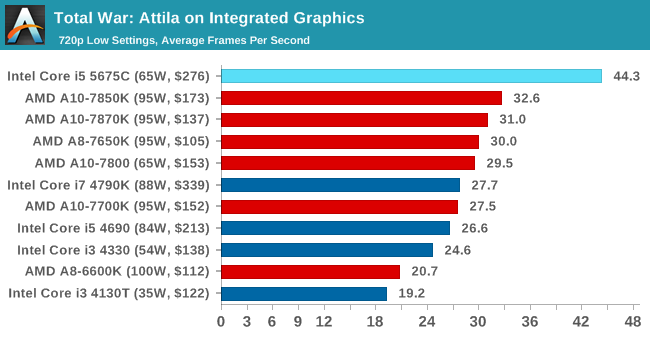
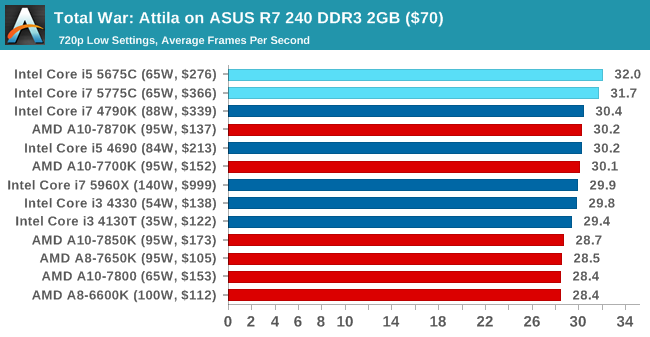
Since many people do not play demanding games, performance of Intel’s modern IGPs may be enough for them. Moreover, since casual and even some mainstream gamers buy low-end graphics adapters, performance offered by Intel’s Iris Pro 6200 and Iris Pro 580 could be the same or higher compared to video cards owned by such people. It is not clear whether 80% of discrete graphics boards currently in use belong to the entry-level segment, but it evident that contemporary IGPs are somewhat better than cheap video cards.
While demanding gamers will continue to use discrete graphics cards, rapid evolution of Intel’s IGPs may significantly improve their popularity going forward even among those, who need more or less high graphics performance.
Even though enthusiast gamers do not use Intel’s high-end IGPs, the company continues to thrive because of PC gaming. According to the chipmaker’s management, sales of its Core i7-series microprocessors set records in Q2 2015 despite weak demand for personal computers overall. Moreover, Intel claims that sales of high-end enthusiast-class hardware in general is at all-time high and growing. Intel sells not only powerful Core i7 CPUs with unlocked multiplier to demanding gamers, but also chipsets, solid-state drives, various controllers and other components for high-end PCs. As a result, the company takes advantage of increasing demand for powerful personal computers by PC gamers.
More...
-
01-14-16, 12:36 PM #5652
Anandtech: The Silver Lining of the Late AMD Opteron A1100 Arrival
AMD announced their ARM server SoC plans at the end of 2012. At the beginning of 2014, AMD was ready "to accelerate the ARM Server Ecosystem with the first ARM-based server SoC" with a development kit. Around March 2014, the A1100 SoCs started sampling. But the quad core dev kits were not only expensive ($3000!), they also had quite a bit of teething problems as performance did not meet expectations, some of the peripheral hardware did not work properly and the software ecosystem was far from ready. We were expecting to see Opteron A1100 based servers at the end of 2014, but instead we got more than a year of almost complete silence. Frustratingly long for anyone who was hoping that AMD would finally bring something competitive to the server world.
Today, AMD is finally announcing that their Octal core Opteron A1100 server SoC and platform is fully ready, "a right sized option for the edge of the datacenter". A few smaller partners are even shipping it but there is no sign of tier 1 OEMs yet. Most people following this part of the semiconductor part are thinking "too little, too late". We are pretty sure that includes you, dear reader. But there is more than meets the eye or we would not bother to write this article.
More...
-
01-14-16, 12:36 PM #5653
Anandtech: CES 2016: 34-inch 3440x1440 AIO Hands-On at GIGABYTE
One of the notable elements of CES this year has been the march of the 34-inch 21:9 3440x1440 all-in-one PC. An all-in-one is what it says on the tin: the PC is for all intents and purposes attached to the back of the monitor, either as a separate box screwed in to the VESA mount or a special chassis developed specifically to have both monitor and PC in one. Several companies showed off their 34-inch AIO builds (there seems to be one single ODM supplying the chassis and panel called Loop to all of them), and I had some time with the one at GIGABYTE’s booth.
We were told this was a quick and dirty run of something that might be built, as due to time contraints the actual product path hasn’t been planned yet, but the hardware is all PC components – a 600W SFX power supply, a mini-ITX motherboard (not thin mini-ITX) with a Skylake processor, liquid cooling, DRAM, and a full sized GPU in there for good measure. In this case we were told that this unit had the Z170N-WiFi motherboard, a Skylake i7, 16GB of DDR4-2400 and a GIGABYTE branded GTX Titan X inside.
That is a lot of hardware in a small space, and it shows – this transparent panel does not do it justice about how much wiring is being routed everywhere. It also doesn’t show the heat coming off the top of the device, especially around the GPU, and needs a thermal camera. Not too hot to touch, but it would certainly keep the room warm in winter.
Something clicked in my mind while having a go that we have come a long way. I remember back even in 2004 going to local LAN events with a big CRT monitor, a full sized gaming tower running the latest Athlon X2 processor and X1900XTX combo, and then complaining that people forgot to update Steam and we didn’t have an onsite Ethernet connection, requiring one-by-one people take their rigs to the house down the road with a connection. Back then we had a massive setup with cables going everywhere. Now we can arguably get to that point, and have a great gaming experience on the latest hardware, by having just one cable into the unit and using a wireless keyboard/mouse. One cable. It’s the future.
We spoke to GIGABYTE, and based on the timing they had not sorted out what configurations would come to market, or if people could configure, or if they would be sold barebones for modders to play with. I will say that the unit was so beta that when I picked the system up a couple of inches to feel the weight and then set it back down, a nice small black line appeared on the panel. Oops. Despite due care and attention, I broke something. I think it was fixed before I left the booth though.
If we consider a 34-inch 21:9 panel at 3440x1440 currently selling around $600-800, then add in a system powerful enough to run that at 60 FPS for most games (i5-6500, GTX 980 Ti, 256GB SSD, closed loop cooler), then we should expect the $2000 mark pretty easily if the OEMs like GIGABYTE are going to add special functionality with software and everything else. I’ve put my name in for a review unit, and I promise I’ll try not to break this one.
More...
-
01-14-16, 03:17 PM #5654
Anandtech: CES 2016: MSIís Vortex Gaming PC on Display and It Looks Almost Like a Mac
One of the most interesting PC designs to come out in recent years was that of the Mac Pro. Sure, it looked like a cylinder into which one might throw discarded objects, or its size/power limitations has meant it can’t extend into that high end workstation that some users require, but in terms of performance per liter, it caused quite a stir. Well it turns out that MSI has done something similar, but this time focused on the gaming community.
The Vortex isn’t new for CES, and there have been murmurings and images floating around for a while, although I must admit it has not been on my radar as of late and it wasn’t even mentioned when I visited MSI’s headquarters last year during Computex. But the design is similar to the Mac Pro – a custom internal design with one CPU and two GPUs in a triangle arrangement, sharing a heatsink arrangement that uses a single fan to extract the heat generated. I was told that the final designs would feature SLI configurations using GTX 960s, GTX 980s and GTX 980 Tis, and I would assume at this point there would be a high end Intel CPU using the Z170 chipset (because you can’t get SLI on other chipsets).
Connectivity is also similar to the Apple product, in that we have multiple Thunderbolt chips in play. These are combined with HDMI 2.0 to give three displays or users can daisy chain out to hubs and storage. The device looks plastic, but I am told is actually a thin metal despite that fact it also feels like plastic. But regardless of the material, the design is fetching for a ‘mini’ gaming machine. It is about the same size as the Mac Pro, and is stepped up from the ground to give an entry point for air to be drawn up through the device.
Because the fan is on top blowing up, there is no real fan filter to speak of. I postulated to MSI that my cat might sit on the top because it is warm, or during extended periods of ‘off’ time that dust would fall in and settle. I was told it shouldn’t be an issue, but the engineer did have a good think about it. If MSI have done all their work internally, it shouldn’t be too difficult for them to create a professional variant of this with ECC and FirePro/Tesla cards in an aluminium chassis for the prosumer ground.
I would like to get some hands on with the internals, and have requested a test unit along with the VR headset they were promoting alongside it, just to see how far a machine this size could push some of the more demanding VR titles. On pricing, if they do intend putting in dual GTX 980 Tis, we could easily see the top model push $1600-$2000, depending on the other internals.
Gallery: CES 2016: MSIís Vortex Gaming PC on Display

More...
-
01-14-16, 09:30 PM #5655
Anandtech: Intel Reports Q4 FY 2015 Results: Record Revenue For Q4
Today Intel announced their earnings for the fourth quarter of fiscal year 2015. The year ended strong, with record revenues of $14.9 billion. This is up 1% of Q4 of 2014, and up 3% over last quarter. Intel’s margins did drop a 1.1%, but are still a healthy 64.3% for the quarter. Operating income for the last quarter of the year was $4.3 billion, and net income came in at $3.6 billion. These results are down 3$ and 1% respectively, compared to Q4 of 2014. Earnings per share was flat at $0.74 per share.
For the full fiscal year 2015, revenues were $55.4 billion, which is down 1% compared to 2014. Gross margin was down 1.1% to 62.6% for the year. Operating income was $14.0 billion, down 9% compared to 2014, and net income was down 2% to $11.4 billion.
For the full year, Intel’s largest division, the Client Computing Group, was down 8% in revenue to $32.2 billion, but for Q4 2015 the group was down just 1% year-over-year. Intel is currently shipping 14 nm parts based on Skylake, and as of November, 14 nm parts made up over 50% of the Client Computing Group’s revenue. The move to 14 nm has been pretty slow by Intel’s standards, and even many of the Skylake chips are in short supply still. With the drop in the overall PC market, it’s not too surprising that this group has dropped, but although total device numbers have dropped, average selling price has increased.Intel Q4 2015 Financial Results (GAAP) Q4'2015 Q3'2015 Q4'2014 Revenue $14.9B $14.5B $14.7B Operating Income $4.3B $4.2B $4.4B Net Income $3.6B $3.1B $3.6B Gross Margin 64.3% 63.0% 65.4% Client Computing Group Revenue $8.8B +3% -1% Data Center Group Revenue $4.3B +4% +5% Internet of Things Revenue $625M +8% +6% Software and Services Revenue $543M -2% -3% All Other Revenue $682M flat +11%
Intel’s record revenue came from the Data Center group, which had record revenue for FY 2015 of $16.0 billion, up 11% compared to 2014. For the quarter, Data Center revenue grew 5% year-over-year to $4.3 billion. The move to cloud computing is going to drive some growth here, and offset some of the weakness in the PC market for companies like Intel. Margins are generally better in this group, so it is less difficult to offset the PC drop with a high margin area like Data Center. Intel is pretty much unchallenged in this space for a lot of computing needs, at least at the moment. There was some struggle in China's market, but the overall market was enough to overcome this.
Internet of Things also had record revenue for the fiscal year. For FY 2015, this segment’s revenue was up 7% to $2.3 billion. It’s still pretty small potatoes compared to the other segments of Intel, but this is one area where they are keen to not fall behind ARM like they did in the mobile space. There is a lot of room for growth here, although it’s going to be at a much lower margin than Intel is accustomed to. For Q4, this division grew 6% year-over-year to $625 million.
Software and Services, which consists of products like McAfee Antivirus, was down 2% for the full year to $2.2 billion. For Q4, revenues were down 3% compared to Q4 2014, coming in at $543 million.
The final segment is Non-Volatile Memory Solutions, and for 2015 this segment had record full-year revenue, up 21% compared to 2014. Unfortunately, Intel does not break this out individually, but it on the conference call they announced revenues of $2.6 billion for FY 2015. Intel announced their 3D X-Point memory, and shipments should start later this year.
For the full year, Intel paid $7.6 billion back to shareholders, with $4.6 billion in dividends and $3.0 billion used to repurchase stock. Intel has announced an increase in dividends to $1.04-per-share on an annual basis.
Intel also announced that they have completed the acquisition of Altera and they took on about $9.5 billion in debt to finance this.
Looking towards FY 2016, Intel is expecting mid to high single digit revenue growth as a percentage compared to 2015, which is an increase over their guidance issued in November. This increase is being attributed to the FPGA business which they have just acquired through Altera. Gross margin is expected to be 63%.
Source: Intel Investor Relations
More...
-
01-15-16, 07:37 AM #5656
Anandtech: CES 2016: Cooler Masterís MasterWatt Connected Digital PSU Almost Ready
As one gets older, or designs PCs for certain users in mind, how much power is being consumed is a key metric. The easiest piece of equipment to use is software, which gives a value but is known for being abstracted from the true value and often wrong due to bad assumptions. The next step up is using a cheap $20 or less wall meter, which most people do, although those readings are skewed by the efficiency of the power supply or assume a constant voltage from the mains. The best reading is at source, and actually probing the component being tested, although that requires digging in with voltage probes on the hardware level. There should be a middle ground, and we saw it back at CES 2015 with Cooler Master.
Back then, we saw an early prototype. The power supply was outfitted with an ARM based microcontroller that could measure certain points of the power supply, giving voltage, current and power at each of those points. This data could be gathered by software using USB, or to another device using Bluetooth because the power supply also had Bluetooth. The idea was that the PSU could be monitored on the system when powered on, or a user could log in to a home server connected via Bluetooth and check via the app. At the time I mentioned a few things regarding power testing and laid a number of demands on the table which would help me in my testing. One of the most pain staking jobs in PC hardware reviewing is power measurements, so anything to simplify that was going to be helpful.
Fast forward twelve months, and Cooler Master is 90% there. The hardware is done, and the model they had on display is a 1200W unit using custom connectors to reduce impedance and power loss, particularly to PCIe power connectors. The ARM based module inside had increased in scope, measuring more points with a 500 millisecond resolution and to a higher accuracy. The Bluetooth module is still in play, connected via USB on the rear.
The last piece in the puzzle is software, which CM says will be ready in weeks. The tool is similar to the app, allows tracking, alerts as well as recording power consumption, showing you how much energy is used per day/week/month. I reiterated my requests, similar to when I did in 2015, such as command line recording per-rail and per-port or perhaps some form of server level and command line control. Compared to last year, because CM is so close, they are being very receptive to my ideas, and I am genuinely excited (although I do accept that the use pattern of a PC tester is different to a casual user). If I can test power at his level, I have some hilariously titled graphs in the pipeline worth waiting for based on the data.
I probed about models, and CM is aiming super high end with the MasterWatt Maker line first. That means a 1200W unit and a 1500W unit, starting north of $500, which relies on systems using three GPUs or dual processor and dual GPU arrangements to get the most out of it. That being said, I can imagine compute projects and design studios wanting to keep tabs on power consumption and this (when LAN/server monitoring is integrated) can give system admins some idea of how the PCs on the company network are playing, or which ones need pre-emptive replacement.
Stay tuned. I’m working with CM to make sure they can configure their hardware tools to allow us to grab the data we need to get a better understanding of the products we test.
More...
-
01-15-16, 09:31 AM #5657
Anandtech: TRENDnet Announces AC2600 Router and AC1900 USB 3.0 WLAN Adapter at CES
TRENDnet's CES suite had plenty of networking equipment ranging from outdoor long-range access points to industrial switches. It made clear that TRENDnet is focusing more on SMB, particularly in the emerging markets. However, the two announcements at CES were both related to their consumer efforts - one was the TEW-827DRU, a AC2600 MU-MIMO 4x4 802.11ac MU-MIMO router and the other was the TEW-809UB, a AC1900 USB 3.0 WLAN adapter.
The TEW-827DRU is a 4x4 802.11ac Wave2 router with MU-MIMO capabilities using the Qualcomm Atheros IPQ8064 (1.4 GHz dual-core Krait 300 CPUs) + QCA9980 platform. It supports 256-QAM on the 2.4GHz band to deliver 800 Mbps of throughput, while the 5GHz band delivers 1733 Mbps. TRENDnet has licensed Qualcomm's StreamBoost QoS engine for this product in order to bring down latencies for gaming applications. The unit features four Gigabit LAN ports and two USB 3.0 ports. Even though the press release went out at CES, the unit has been available on Amazon for a couple of months now. The press release suggests a retail price of $275, but Amazon already has it on sale at $238.
Gallery: TRENDnet TEW-827DRU AC2600 Router




Note that this is not the latest QCA platform. The IPQ8065 + QCA9984 with 160 MHz channel support is the leading edge offering from QCA now, but routers based on that platform (example) will launch at a higher price point.
The other interesting announcement was the TEW-809UB, a AC1900 USB 3.0 WLAN adapter. It is a 3x3 solution (1300 Mbps in the 5GHz band and 600 Mbps in the 2.4GHz band). The specifications looked suspiciously similar to the D-Link DWA-192 which uses the Realtek RTL8814AU 802.11ac wireless chipset with a USB 3.0 interface. I confirmed with TRENDnet that the TEW-809UB also uses the same chipset.
The DWA-192 goes for compactness and internal antennae. The TEW-809UB could potentially provide a better user experience due to the presence of external antennae. The unit comes with a 3.3ft USB 3.0 cable that should make it easy to optimally orient the device for both desktops and notebooks. Despite the marketing pamphlet indicating magnetic mounting options in the above picture, TRENDnet indicated that wall-mounting and desktop placement are the only available options. The MSRP will be $110 when it launches in early Q2.
More...
-
01-15-16, 12:30 PM #5658
Anandtech: CES 2016: MSI Gaming Notebooks and Mobile Workstations
MSI has branched out into primarily gaming focused systems, but they also use the same gaming chassis as workstation devices too. This year at CES, MSI also launched a very nice looking gaming tower, which is very small but incredibly powerful.
First, MSI showed me their workstations. I have to admit; I’ve often wondered why companies don’t leverage existing gaming systems as the basis for workstations. A bit of extra validation, and some different components, and the system should be a pretty capable workstation. That’s exactly what MSI has done. The have taken their GS60, GS72, and GT72 gaming systems, and converted them to workstations with optional Xeon processors and Quadro graphics.
The WS series is the slimmer models, and the WT model has the most cooling capability, and carries the most powerful graphics card of the trio, with the Quadro M5000M, which is a 1536 CUDA Core, 8 GB, 100-Watt card. The smaller WS series have the M2000M model, which is a 640 CUDA core, 4 GB, 55-Watt professional GPU. MSI has kept a lot of the same styling, including the colored backlit keyboard, and other gaming touches. I pointed out that they can’t compromise the keyboard like they have on a workstation class device, because even on the largest model the number pad and arrow keys overlap.
Gallery: MSI Workstations





The rest of the gaming laptops were on display, but they remain basically untouched at this point, other than the refresh to Skylake. The GT80 Titan was being shown off with the dual-GTX 980 desktop class cards on MXM modules, which is a step up on the SLI GTX 980M cards which were installed in our review unit. This is still a beast of a notebook, and no other vendors have really stepped up to compete against it quite yet, although there are a couple of other 18.4-inch devices now.
Gallery: MSI Gaming Laptops





The one new gaming model was the GT72S Tobii, which takes the basic GT72S and adds Tobii eye tracking to the bottom of the panel. MSI was demoing the capabilities, but their focus is gaming, which means the eye tracking could be used to help navigate in a FPS. The demos looked interesting, and if nothing else, the Tobii system is being certified for use with Windows Hello to offer biometric login.
MSI also had an interesting AIO called the PRO 16 Flex, which has a Braswell N3150 CPU behind a 15.6-inch display. The interesting bit is that the AIO also features a small battery, so it can be used unplugged for short periods of time. This is an upgraded version of a previous model which had a J1900 Celeron.
Gallery: MSI Pro 16 Flex





More...
-
01-15-16, 08:30 PM #5659
Anandtech: Microsoft To Only Support New Processors On Windows 10
Microsoft has long been the bastion of long term support for older platforms, so today’s support news out of Redmond is particularly surprising. Intel launched it’s 6th generation Skylake cores back in August, and support on Windows 7 has been not as strong as Windows 10 right out of the gate. It’s not terribly strange that new features like Intel’s Speed Shift will not be coming to Windows 7, but today Microsoft announced that going forward, new processors will only be supported on Windows 10. Skylake will only be supported through devices on a supported list, and even those will only have support until July 2017.
For the average consumer buying a new PC, this is not a huge issue. Generally, consumers buy a PC and use the operating system that it comes with. That is going to be Windows 10. But the enterprise schedule is often much more drawn out when it comes to desktop operating system support. Windows XP was the most famous example of this, with businesses clinging to it well past its best before date, because Windows Vista and newer versions of the operating system significantly changed the system rights and driver models, rendering older programs incompatible.
The move to Windows 7 was very drawn out, so perhaps Microsoft is trying to avoid this again in the future, but moving an enterprise to a new desktop OS can bring a lot of testing requirements, training, and back-end infrastructure updates which are all non-trivial. Microsoft has made its name in the enterprise by being generous with support lifetimes, and I think what is most troubling about today’s news is that Windows 7 has long-term support until January 14, 2020, and Windows 8.1 until January 10, 2023. News like this is going to catch a lot of companies off-guard, since they would have been expecting to have at least until 2020 to migrate off of Windows 7, and many of these companies have just finally moved to Windows 7 after a decade or more on XP.
To give just 18 months with these support policies is likely not what companies want to hear. This doesn’t mean that Windows 7 will be end of life in July 2017, but if you can’t run it on new hardware, this is going to put a dent in device sales too. If companies are not ready to move to Windows 10, they may have to stick with older hardware.
This does not just affect Intel based machines either. According to the blog post my Terry Myerson, Windows 10 will be the only supported Windows platform for Kaby Lake (Intel’s next gen 14 nm processors), Snapdragon 820 (Qualcomm), and Carrizo (AMD).
Going forward, as new silicon generations are introduced, they will require the latest Windows platform at that time for support. This enables us to focus on deep integration between Windows and the silicon, while maintaining maximum reliability and compatibility with previous generations of platform and silicon. For example, Windows 10 will be the only supported Windows platform on Intel’s upcoming “Kaby Lake” silicon, Qualcomm’s upcoming “8996” silicon, and AMD’s upcoming “Bristol Ridge” silicon.
After July 2017, computers on the supported list that are still running Windows 7 will still get security updates, but any updates specific to that platform will not be released if it risks the reliability of other Windows 7 or 8.1 platforms.
To me, the oddest part of the announcement is who it is coming from. When Intel releases a new CPU, it is generally the motherboard makers working with Intel who provide the correct BIOS emulation modes and drivers for older versions of Windows. It’s somewhat odd that Microsoft is the one announcing this news rather than a company like Intel or AMD stating they won’t be supporting the older platform.
For those in the business world, this blog post may force you to reconsider your upgrade plans, or at least your hardware evergreen cycle. A full list of supported PCs for the 18-month period is supposed to be released next week.
Source: Windows Blog
More...
-
01-16-16, 06:41 AM #5660
Anandtech: Zotac Updates ZBOX mini-PC Lineup at CES
Zotac had announcements in multiple segments at CES. Obviously, the SSD entry was the big talking point with the PCIe variant boasting good performance numbers. Zotac also had a home automation announcement, the Cozee Smart Home Kit. The lineup will have ZigBee sensors, an IP camera and a gateway.The hardware and software / apps are not final and still being worked on. Therefore, I will postpone detailed coverage of that announcement and concentrate on the updates made by Zotac in the mini-PC space in this article.
Zotac had all their mini-PC models neatly arranged out in their suite. These included models such as the Steam Machine NEN that was announced back in November and the MI551 Skylake mini-PC announced last month. The number of models made my head swim (in a good way). In order to help navigate the available models, Zotac provided the press with a table which lists various features and the models that support them. The list is reproduced in the picture below. More information about the models that launched at CES is available below the picture. Pricing for these units is not available yet.
C-Series with Skylake
We reviewed almost all of the Zotac C-series PCs that started appearing in the market towards the end of 2014. Using the Y-series processors in a fanless chassis, they provided very good performance for users looking for compact and silent solutions. With Skylake, Zotac is going for a slightly larger and heavier solution, but the platform will support higher TDP CPUs (Skylake-U). The currently planned specifications are as below:
- Intel Core i5-6300U
- Intel HD Graphics 520
- 2.5" SATA slot
- 2x DDR3L-1600 SODIMM
- USB 3.1 Type-C
- Dual GbE LAN, 802.11ac Wi-Fi, BT 4.0
- DisplayPort and HDMI
The gallery below provides some pictures of the chassis.
Gallery: Zotac ZBOX C-Series with Skylake




The Skylake C-Series is at least a quarter away from launch. So, it is possible that specifications might change before it comes to the market.
PC Stick
We reviewed the Cherry Trail Compute Stick recently, and Zotac's version has a slight variation. The USB 3.0 port in the Intel Cherry Trail Compute Stick is replaced by a 10/100 Mbps LAN port. Other than that, all the specifications are the same.
- Intel Atom x5-Z8300
- Intel HD Graphics
- 32GB eMMC, 2GB DDR3L RAM
- 1x USB 2.0, 1x microSD
- 10/100 Mbps RJ-45 and 802.11ac Wi-Fi, BT 4.0
- HDMI output (male)
The gallery below provides some pictures of the exterior:
Gallery: Zotac PC Stick





ZBOX MA761 and ZBOX EA740
These two products have similar specifications, but target different market segments. The MA761 has 6 DisplayPort outputs and targets the digital signage market. The EA740 has 3 DisplayPort outputs and targets the gaming market (similar to the EN970 that we reviewed last year) All the other specifications (including the GPU model) are the same.
- Intel Core i3-6100T
- AMD Radeon R9 M365X with 2GB GDDR5
- 2x DDR3L-1600 SODIMM
- 2.5" SATA and a M.2 SSD slot
- USB 3.0 Type-C
- SDXC UHS-II card reader
- Dual GbE LAN, 802.11ac Wi-Fi, BT 4.0
The gallery below provides some pictures of the chassis of both units:
Gallery: Zotac ZBOX MA761



Gallery: Zotac ZBOX EA740



ZBOX EI751
The EI751 is the follow-up product to the ZBOX EI750, one of the Haswell Crystal Well-based mini-PCs equipped with Iris Pro graphics. The EI751 makes the move from Haswell to Broadwell while retaining an Iris Pro-equipped SKU. The full specifications are provided below:
- Intel Core i7-5775R
- Intel Iris Pro Graphics 6200
- 2x DDR3L-1866 SODIMM
- 2.5" SATA and a mSATA slot
- SDXC card reader
- Dual GbE LAN, 802.11ac Wi-Fi, BT 4.0
- 2x Display Port, DVI-D (Single Link)
The gallery below provides some pictures of the exterior:
Gallery: Zotac ZBOX EI751





ZBOX PICO with Cherry Trail T3 & T4
The platforrm is similar to that of the PC Stick mentioned before (i.e, a Cherry Trail tablet board, but, in a pocket-sized form factor). The only difference is the chassis design and the availability of some extra display and I/O ports. The full specifications are provided below:
- Intel Atom x5-Z8300 (T3) / Intel Atom x7-Z8700 (T4)
- Intel HD Graphics
- 32GB eMMC, 2GB LPDDR3
- 3x USB 2.0 (T3), 3x USB 3.0 - (2x Type-A + 1x Type-C) (T4)
- 10/100 Mbps RJ-45 (T3) / 1 GbE RJ45 (T4)
- 802.11ac, BT 4.0
- HDMI, DisplayPort
- microSD Slot
- Windows 10 Home Preinstalled
The gallery below shows the chassis of the Pico x7 (T4)
Gallery: Zotac ZBOX PICO - Cherry Trail





At CES, Zotac announced mini-PC models targeting every segment in the market space - from gaming enthusiasts to users looking for silent and compact HTPCs. They have, without doubt, the widest mini-PC lineup in the whole industry. It is hardly surprising, given that their ZBOX nano xs mini-PCs had come to the market even before the first Intel NUC. We are looking forward to having some of the announced units in for review over the next few months.
More...
Thread Information
Users Browsing this Thread
There are currently 33 users browsing this thread. (0 members and 33 guests)





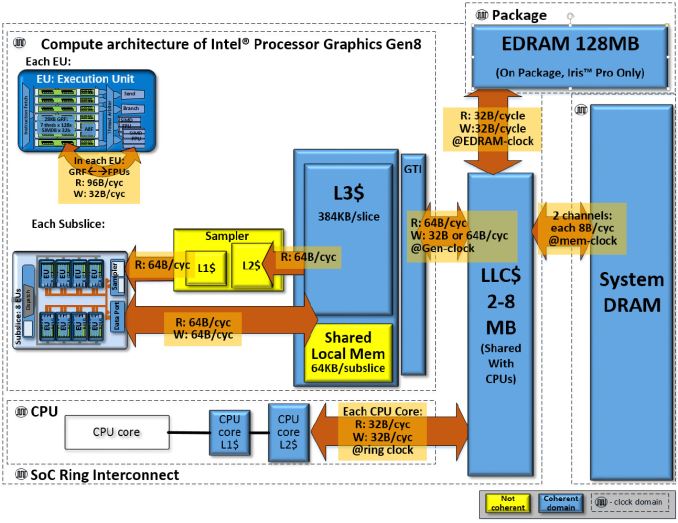
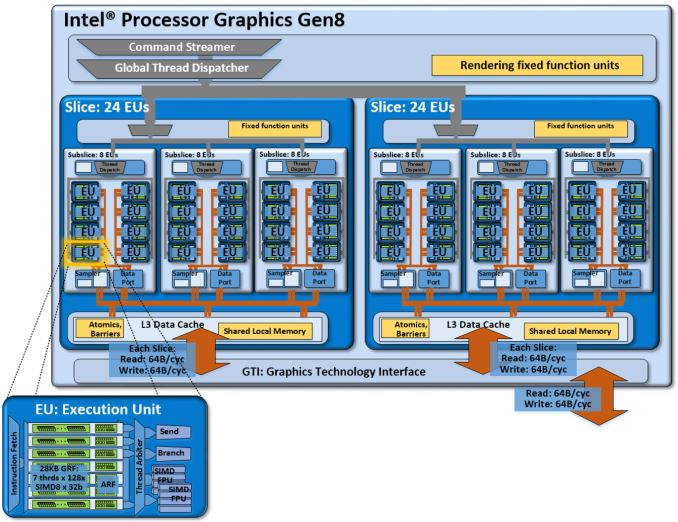
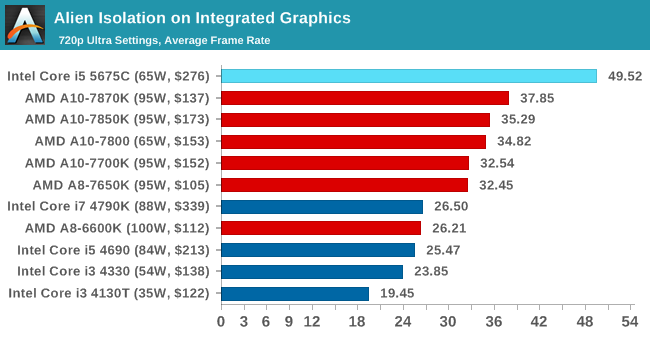
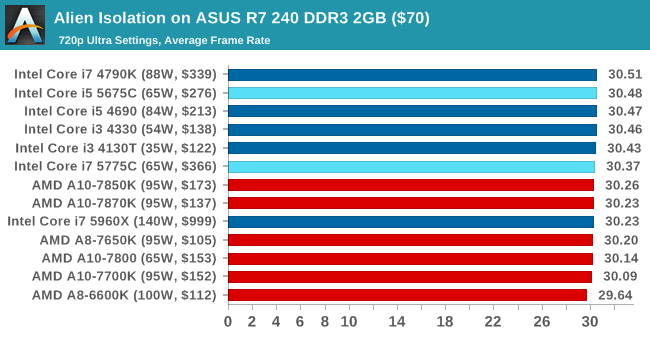

 Quote
Quote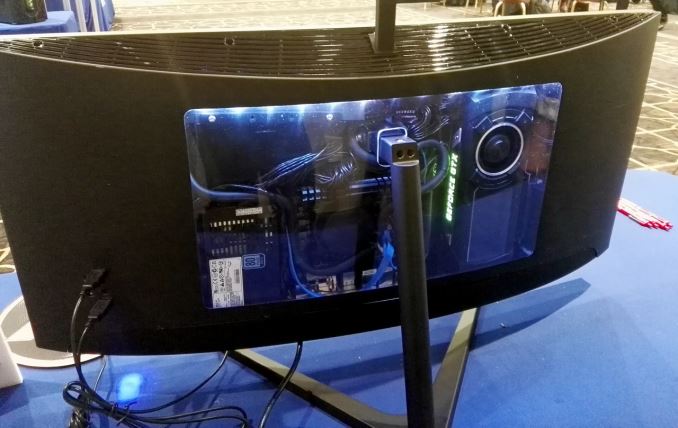

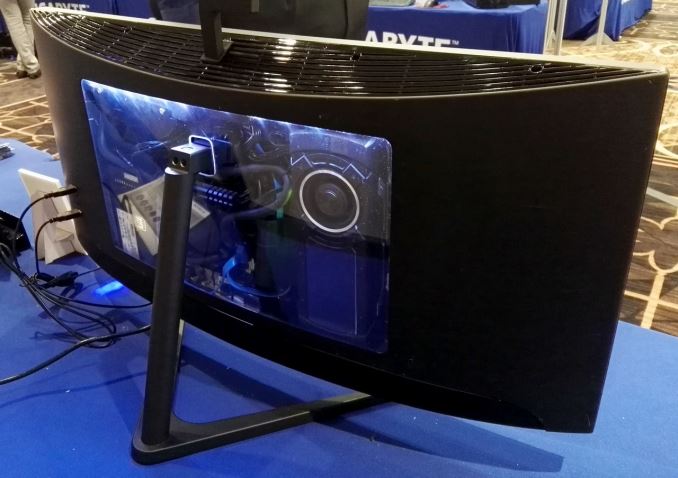
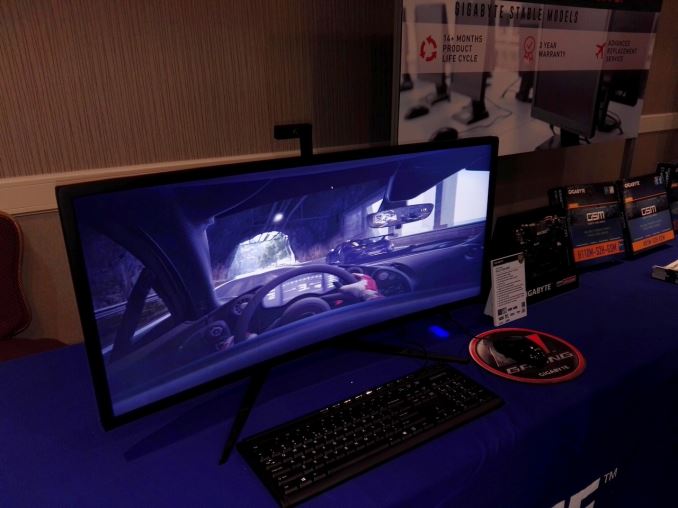
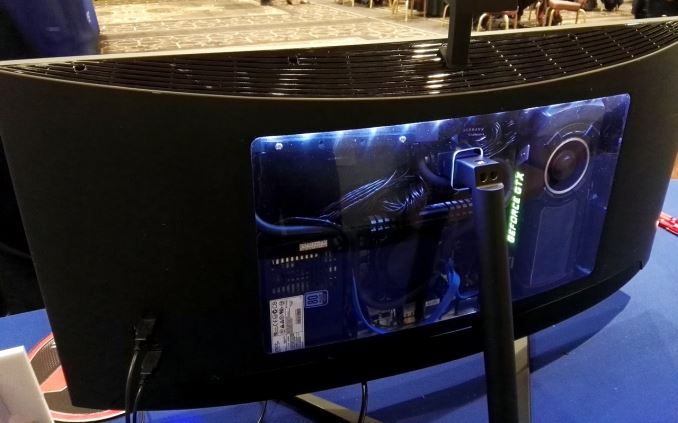
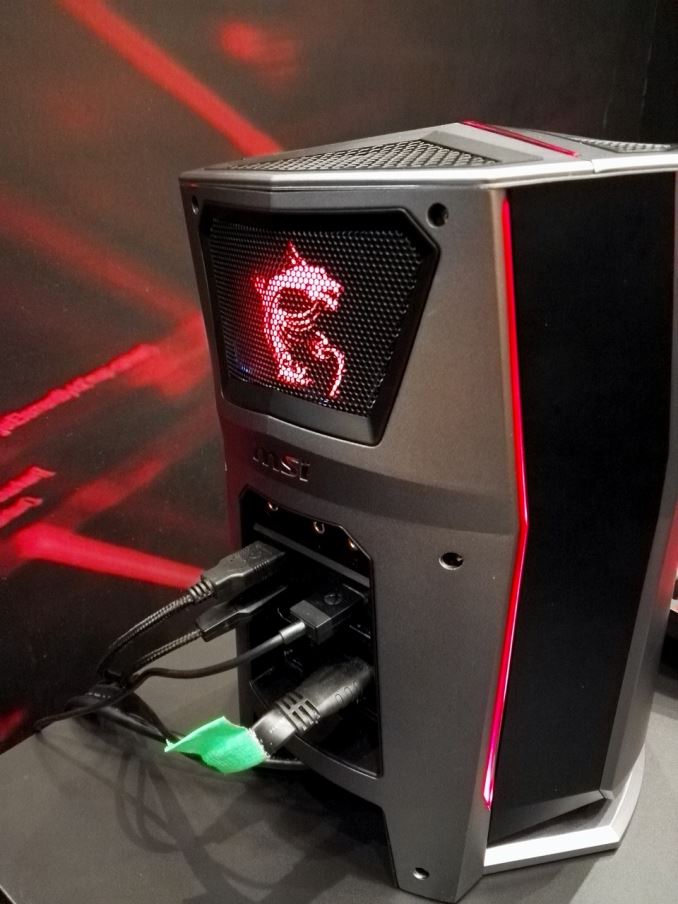
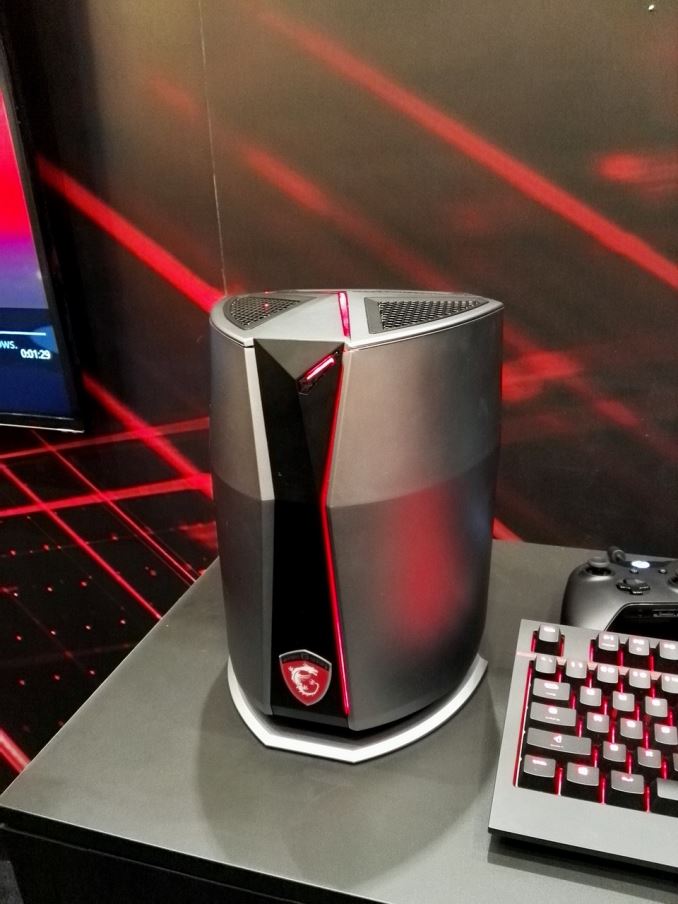
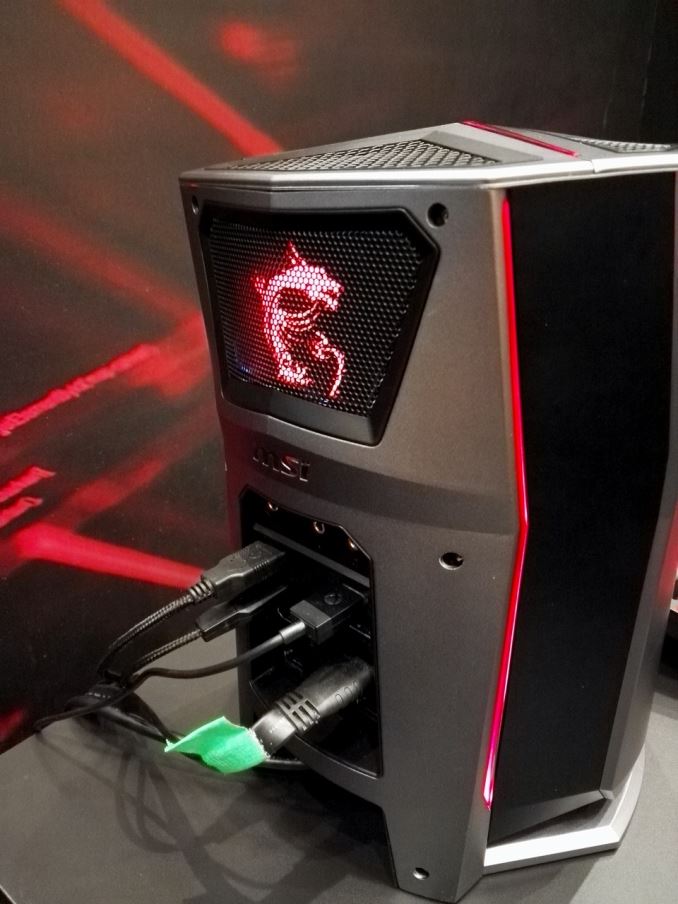
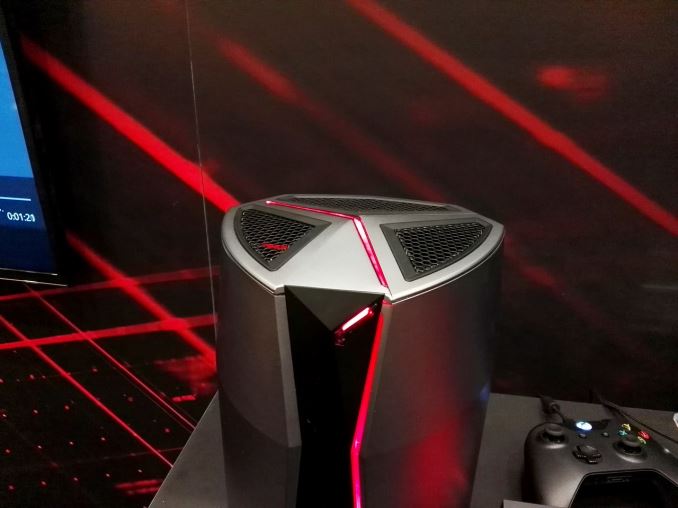
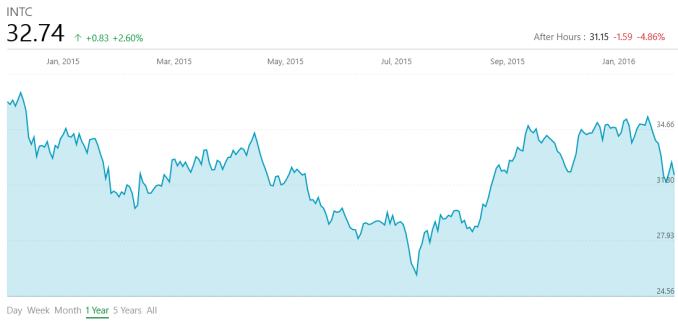
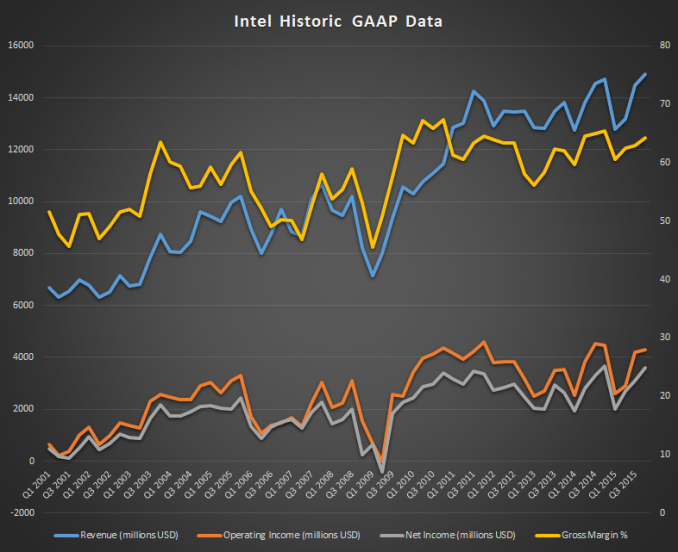
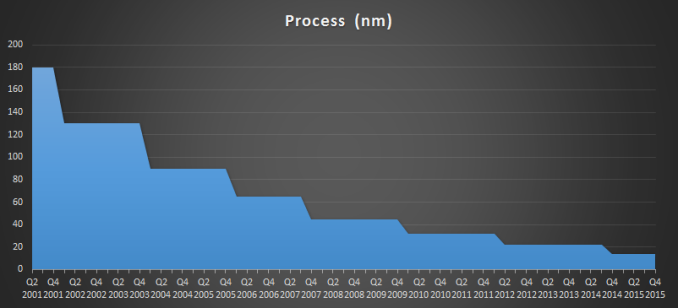
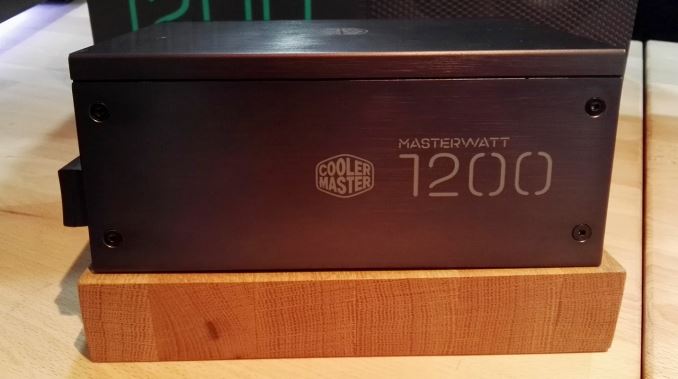
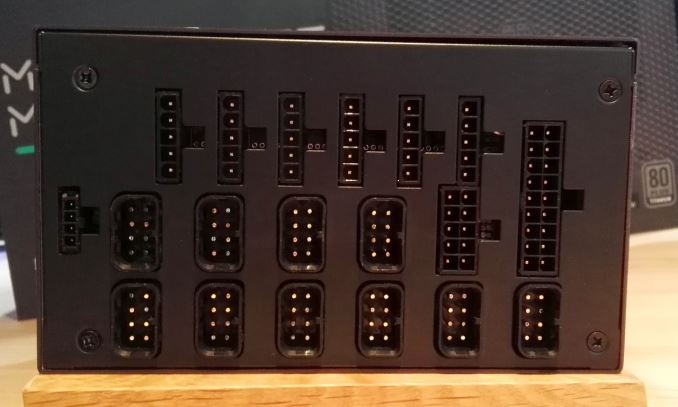
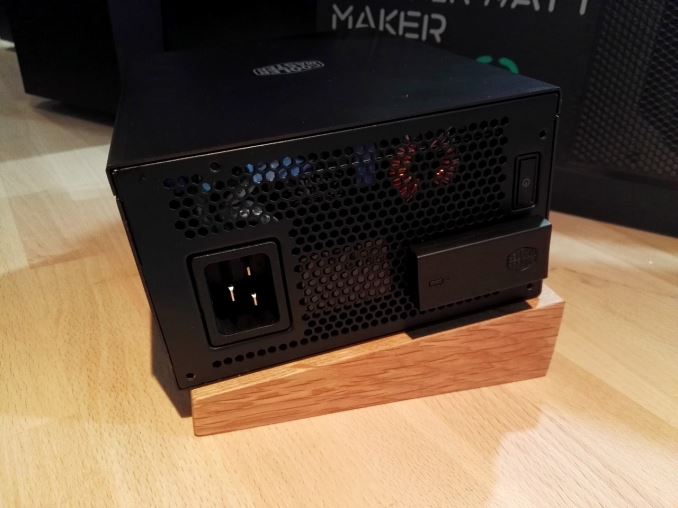
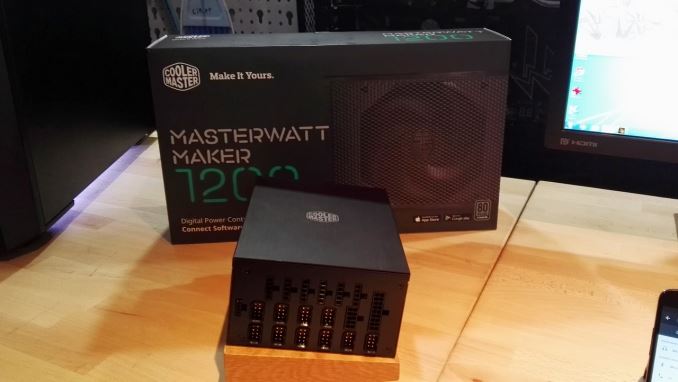


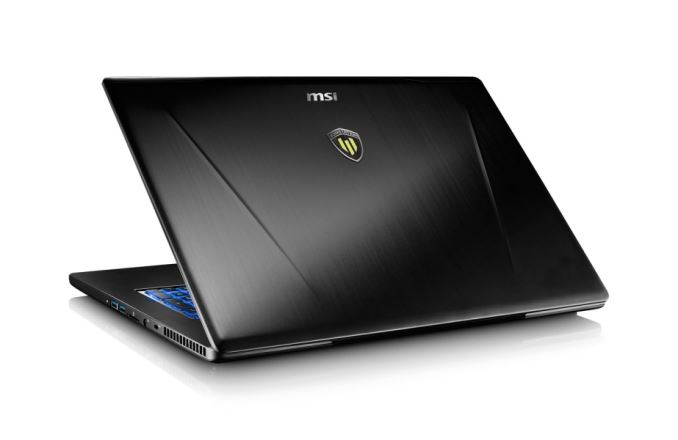



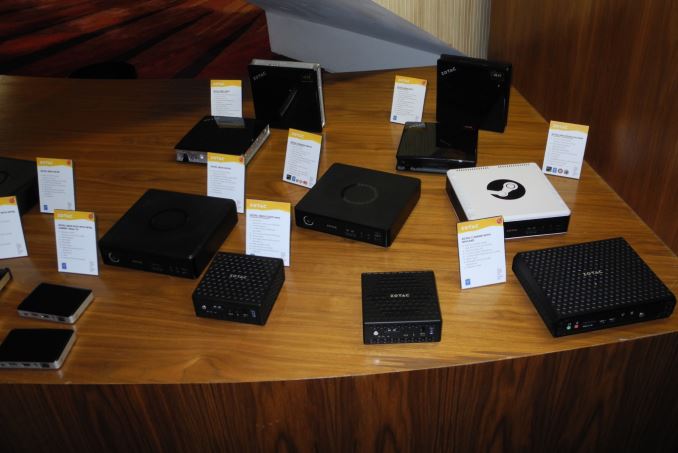

















Bookmarks